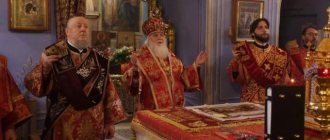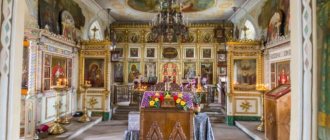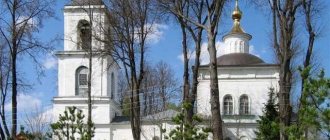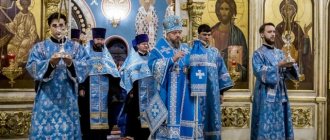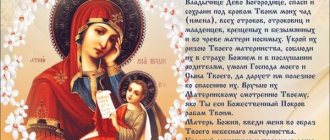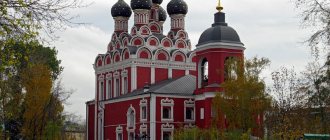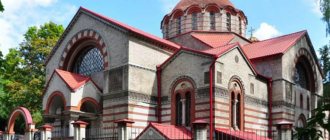Mir
Russia Moscow Temple of the Icon of the Mother of God “Quench My Sorrows” in Maryino (Moscow) Map is loading...
{"format":"leaflet","minzoom":false,"maxzoom":false,"limit":50,"offset":0,"link":"all","sort":[""], "order":[],"headers":"show","mainlabel":"","intro":"","outro":"","searchlabel":"\u2026 \u0441\u043b\u0435\ u0434\u0443\u044e\u0449\u0438\u0435 \u0440\u0435\u0437\u0443\u043b\u044c\u0442\u0430\u0442\u044b","default":"","import-annotation":false,"width ":"auto","height":"350px","centre":{"text":"","title":"""link":"""lat":55.6483300000000014051693142391741275787353515625,"lon": 37.74750000000000227373675443232059478759765625,"icon":""},"title":"","label":"","icon":"","lines":[],"polygons":[], "circles":[ ],"rectangles":[],"copycoords":false,"static":false,"zoom":8,"defzoom":14,"layers":["OpenStreetMap"],"image layers":[] ,"overlays":[],"resizable":false,"fullscreen":true,"scrollwheelzoom":true,"cluster":false,"clustermaxzoom":9,"clusterzoomonclick":true,"clustermaxradius":80, "clusterspiderfy":true,"geojson":"","clicktarget":"","showtitle":true,"hidenamespace":false,"template":"","userparam":"","activeicon": "","pagelabel":false,"ajaxcoordproperty":"","ajaxquery":"","locations":[{"text":"\u003Cb\u003E\u003Ca href=\"/palomnik/%D0% A5%D1%80%D0%B0%D0%BC_%D0%B8%D0%BA%D0%BE%D0%BD%D1%8B_%D0%91%D0%BE%D0%B6%D0%B8% D0%B5%D0%B9_%D0%9C%D0%B0%D1%82%D0%B5%D1%80%D0%B8_%C2%AB%D0%A3%D1%82%D0%BE%D0% BB%D0%B8_%D0%BC%D0%BE%D1%8F_%D0%BF%D0%B5%D1%87%D0%B0%D0%BB%D0%B8%C2%BB_%D0%B2_% D0%9C%D0%B0%D1%80%D1%8C%D0%B8%D0%BD%D0%B5_(%D0%9C%D0%BE%D1%81%D0%BA%D0%B2%D0 %B0)\» title=\»\u0425\u0440\u0430\u043c \u0438\u043a\u043e\u043d\u044b \u0411\u043e\u0436\u0438\u0435\u0439 \u041c\u0430\u0442\u0 435\u0440\ u0438 \u00ab\u0423\u0442\u043e\u043b\u0438 \u043c\u043e\u044f \u043f\u0435\u0447\u0430\u043b\u0438\u00bb \u0432 \u041c\u0430\u 0440\u044c\u0438\u043d\u0435 ( \u041c\u043e\u0441\u043a\u0432\u0430)\»\u003E\u0425\u0440\u0430\u043c \u0438\u043a\u043e\u043d\u044b \u0411\u043e\u0436\u04 38\u0435\u0439\u041c\ u0430\u0442\u0435\u0440\u0438 \u00ab\u0423\u0442\u043e\u043b\u0438 \u043c\u043e\u044f \u043f\u0435\u0447\u0430\u043b\u0438\u0 0bb\u0432\u041c\u0430\u0440\ u044c\u0438\u043d\u0435 (\u041c\u043e\u0441\u043a\u0432\u0430)\u003C/a\u003E\u003C/b\u003E\u003Chr /\u003E\u003Ca href=\»/palomnik/%D0% A1%D0%B2%D0%BE%D0%B9%D1%81%D1%82%D0%B2%D0%BE:%D0%90%D0%BD%D0%BD%D0%BE%D1%82 %D0%B0%D1%86%D0%B8%D1%8F\" title=\"\u0421\u0432\u043e\u0439\u0441\u0442\u0432\u043e:\u0410\u043d\u043d\u043e\u0442\ u0430\u0446\u0438\u044f\»\u003E\u0410\u043d\u043d\u043e\u0442\u0430\u0446\u0438\u044f\u003C/a\u003E: »'\u0425\u0440\u0430\u0 43c\u0438\u043a \u043e\u043d\u044b \u0411\u043e\u0436\u0438\u0435\u0439 \u041c\u0430\u0442\u0435\u0440\u0438 \u00ab\u0423\u0442\u043e\u043b\ u0438\u0301\u043c\u043e\u044f \u0301 \u043f\u0435\u0447\u0430\u0301\u043b\u0438\u00bb"' \u2014 \u043f\u0440\u0430\u0432\u043e\u0441\u043b\u0430\u0432\u043 d\u044b\u0439\u0445\u0440 \u0430\u043c \u0412\u043b\u0430\u0445\u0435\u0440\u043d\u0441\u043a\u043e\u0433\u043e \u0431\u043b\u0430\u0433\u043e\u0447\ u0438\u043d\u0438\u044f\u041c \u043e\u0441\u043a\u043e\u0432\u0441\u043a\u043e\u0439 \u0435\u043f\u0430\u0440\u0445\u0438\u0438 \u0420\u0443\u0441\u0441\ u043a\u043e\u0439\u043f\u0440 """title":"\u0425\u0440\u0430\ u043c\u0438 \u043a\u043e\u043d\u044b \u0411\u043e\u0436\u0438\u0435\u0439 \u041c\u0430\u0442\u0435\u0440\u0438 \u00ab\u0423\u0442\u043e\ u043b\u0438\u043c\u043e\u044f \u043f\u0435\u0447\u0430\u043b\u0438\u00bb \u0432 \u041c\u0430\u0440\u044c\u0438\u043d\u0435 (\u041c\u043e\u0441\u043a\u0432\ u0430)","link": "","lat":55.6483300000000014051693142391741275787353515625,"lon":37.747500000000000227373675443232059478759765625,"icon":""}],"imageLayers ":[]}
55.64828; 37.747469
Russia, Moscow, Maryinsky Boulevard, 2
Moscow
Russia
Telephone:
+7 (499) 784-88-60
Email:
Temple of the Icon of the Mother of God “Quench My Sorrows”
- Orthodox church of the Blachernae deanery of the Moscow diocese of the Russian Orthodox Church.
History[edit]
The small church was built in 1996, the first service was held on January 5, 1997.
The main (stone) church was founded on September 2, 1999 by His Holiness Patriarch of Moscow and All Rus' Alexy II in the presence of the mayor of Moscow YuM. Luzhkov.
On August 28, 2000, Archbishop Arseny of Istra consecrated crosses and bells for the new church.
On February 24, 2001, Patriarch Alexy II of Moscow and All Rus' performed the rite of minor consecration of the temple and presented the image of St. Alexy, Metropolitan of Moscow, wonderworker. The mayor of Moscow, prefect of the South-Eastern district V.B. Zotov was present at the consecration. From this day on, regular daily services began in the new stone church.
Archpriest Anatoly Rodionov was appointed rector, who took upon himself all the work on the construction of the temple building. Despite the fact that the temple itself was erected by the Moscow authorities in a year, the rector and clergy of the temple continued to beautify it in the future. By 2009, the interior painting of the temple was completed.
On February 27, 2011, the Meat Week, the Last Judgment, and the day of remembrance of St. Equal-to-the-Apostles Cyril, teacher of Slovenia, His Holiness Patriarch of Moscow and All Rus' Kirill performed the great consecration of the temple and the Divine Liturgy in the newly consecrated church. Concelebrating with His Holiness were: Archbishop Arseny of Istra; Chairman of the Synodal Department for Youth Affairs, Bishop Ignatius of Bronnitsky; Head of the Administrative Secretariat of the Moscow Patriarchate, Bishop Sergius of Solnechnogorsk; Chairman of the Synodal Committee for Interaction with the Cossacks, Bishop Kirill of Pavlovo-Posad; Secretary of the Patriarch of Moscow and All Rus' for the city of Moscow, Archpriest Vladimir Divakov; Dean of the Peter and Paul District of Moscow, rector of the Church in honor of the Icon of the Mother of God “Quench My Sorrows” in Maryino, Archpriest Anatoly Rodionov; head of the personal secretariat of the Patriarch of Moscow and All Rus', Hieromonk Anthony (Sevryuk); rectors of the churches of the Peter and Paul Deanery and the capital's clergy.
The service was attended by the prefect of the South-Eastern Administrative District of Moscow V.B. Zotov and the head of the Maryino district administration A.V. Smoryakov.
At the small entrance, the Primate of the Russian Church awarded Archpriest Anatoly Rodionov the right to wear the miter.
At the end of the Divine Liturgy, His Holiness was greeted by Archpriest Anatoly Rodionov, who thanked His Holiness for the high award. In his speech, Father Anatoly, in particular, noted that the great consecration of the temple in Maryino took place during the celebration of its tenth anniversary - on February 24, 2001, His Holiness Patriarch Alexy II of blessed memory performed the rite of small consecration of the temple. On behalf of the clergy and parishioners, Archpriest Anatoly Rodionov congratulated His Holiness the Patriarch on the day of remembrance of his heavenly patron and presented the icon of St. Equal-to-the-Apostles Cyril and the image of the Mother of God “Quench My Sorrows.”
Then the Primate of the Russian Church addressed the participants of the service with the Primate's word. His Holiness donated an ancient image of the Holy Life-Giving Trinity to the temple.
Brief information
The initial structure of the church was erected in the nineties of the last century; the first service in the Maryino Church “Quench My Sorrows” was in January 1997 before the Feast of the Nativity of Christ.
The foundation stone for the new construction was laid by Patriarch Alexy II of Moscow at the beginning of 2000, with the participation of the mayor of the capital Luzhkov, and Archbishop Arseny of Istra consecrated the new building.
The service schedule of the church in Maryino is almost similar to other cathedrals.
The best article for you, go to: Savvino-Storozhevsky Monastery in Zvenigorod
At the church:
- Sunday School;
- missionary mission;
- clubs for youth;
- educational circles and catechesis;
- work with military organizations.
The community is establishing an orphanage in Maryino.
History of the image
Shklov.
Photo: chrontime.com Initially, the most ancient icon of the Mother of God was located in the town of Shklov, Mogilev province (now the territory of Belarus). In the old days, in this place there was a convent in honor of the Resurrection of Christ, and the glory of the icon extended far around. After some period of time, the monastery fell into decay, and in 1655 the city of Shklov was captured by the army of the Great Russian Tsar Alexei Mikhailovich. A detachment of Cossacks brought all the valuables of the captured city (mostly icons rare for Great Russia) to Moscow, including among them a copy of the “Quench” icon (the first name of the icon “Quench My Sorrows”).
“quenchable” means quenching, taming, i.e., quenching illnesses and sorrows. The oldest surviving Moscow icon of the Mother of God, “Quench My Sorrows,” belongs to the brush of one of the royal icon painters of the 17th century. Initially it was located in the Church of Tikhon of Amafuntsky on Arbat, and now it is located in the only surviving Arbat Church of the Resurrection of the Word. This icon is considered the most accurate and oldest copy of a genuine miraculous icon.
Miracles with an icon
St. Nicholas Church in Pupyshi, where the icon was found and a miracle of healing occurred (destroyed).
Photo: voskrcerkov.ru Real national recognition and glorification of the icon with the title “Quench My Sorrows” happened precisely with the copy of the icon, which was located in the Moscow Church of St. Nicholas, in Zamoskvorechye. Due to the later reconstruction of the temple or for some other reason, the icon was moved to the bell tower and fell into oblivion. But one day a miraculous incident led to a new discovery.
At the end of the 18th century, there lived a certain noble woman who was not in good health. She later found herself completely relaxed and motionless, her days numbered on this earth. The doctors could no longer help or alleviate her suffering. One day, the Most Holy Theotokos appeared to her in a dream and addressed the sufferer with the words: “Tell yourself to be taken to Moscow. There, on Pupyshev, in the Church of St. Nicholas, there is My image with the inscription: “Quench my sorrows,” pray before it and you will receive healing.”
During the conversation, she was also shown the image itself. Having arrived with relatives at the indicated temple, they, together with the priests, searched for this icon in the temple for a long time, but could not find it. And only when they brought all the icons, even the dilapidated and dusty ones from the bell tower, did they find one among them with the inscription “Quench my sorrows.”
The sick woman saw the icon and immediately crossed herself, although before that she had not even been able to move her hand. After the prayer of praise, the woman stood up, kissed the icon and became completely healthy. To everyone's complete surprise, she was completely healed. This happened on January 25 (old style) 1760, but the woman’s name has not been preserved.
Many miracles happened to the icon during the plague epidemic of 1771. Cases of miraculous healings were recorded in church books, but were later destroyed by fire during a great fire, and only tradition preserved the memory of miraculous events.
Church in honor of the Icon of the Mother of God “Kazan” in the village of Maryino, Torzhok district
Local religious organization Orthodox Parish of the Church of the Kazan Icon of the Mother of God. Maryino Tver and Kashin Diocese of the Russian Orthodox Church (Moscow Patriarchate)
History and description:
Since ancient times, the chapel in honor of the Transfiguration that existed in the village (the dedication was connected with belonging to the parish in the village of Spas) was built in stone in 1852. In the spring of 1897, Archbishop Dimitri (Sambikin) visited the village. He invited the peasants to rebuild the chapel into a church, promising them support. The peasants promised to “try.” Indeed, in 1902, an extensive refectory and bell tower were added to the chapel. The builder was Marinsky peasant Fyodor Romanov.
The church operated before the war and reopened in 1944. The priests Boris Arkhangelsky, Alexander Pankov, Ioan Yashin, Pavel Danilov, and Pyotr Gerasimovich served in it. Nun Olga Zhuravleva was the psalm-reader, breadmaker and cleaner. This continued until 1963. This year, Commissioner Boris Shantgay intended to close the church (there was persecution of believers in the country, it was necessary to close as many churches as possible). Shantgay was able to come to an agreement with Archbishop Innokenty (Leoferov), who “surrendered” Maryino in exchange for the opening of a temple in Vitozhetka (in the Penovsky district). All old church assets were deregistered. But the authorities underestimated the strength of resistance. It was headed by an old soldier who went through the First World War, a stove maker by profession, Stepan Alekseevich Ryabov. Despite the strong pressure on him from the authorities, he continued to write in all places throughout 1964 and 1965. He found decisive support in the person of the head of the affairs of the Moscow Patriarchate, Archbishop Alexy (Ridiger). Thanks to the efforts of the future Patriarch, Ryabov was able to turn the situation around. A direct telegram from Patriarch Alexy (Simansky) on December 25, 1965 was the last straw that broke the commissioner and the archbishop; a week later the church council was registered (without Ryabov, of course). Pressure on believers continued subsequently, but the parish survived. Since 1968, priest Evgeny Lisitsyn has served in Maryino, since 2000 - Sergius Khotsky, from 2009 to the present, priest Andrei Gaidai has served.
Ivanov P. Temples of Novotorzhskaya land. Church and local history essays. — Tver, 2010.
Affiliated chapels:
1) St. Seraphim of Sarov in the village of Krupshevo, Torzhok district. 2) Sergius of Radonezh in the village of Shchekino, Torzhok district. 3) Rev. Daniel the Stylite village of Vasilyeva Gora, Torzhok district.
Clergy
- Andrey Aleksandrovich Gaidai, priest - rector
Schedule of services of the “Quiet My Sorrows” Church in Maryino and address
Services are held daily in the Maryinsky Church:
- every day morning service and chant at 09:00, evening service at 17:00;
- on Wednesday an akathist to the image of the Mother of God “The Inexhaustible Chalice”;
- on Friday, an akathist to the image of the Mother of God “Quench my sorrows.”
Patronal feasts of the image of the Mother of God:
- “Quench my sorrows” February 7;
- “Deliverer” April 30 and October 30;
- “The Inexhaustible Chalice” May 18.
The church is located in the Maryinsky district. Address: Maryinsky Blvd., 1. You can get there by metro to the Maryino station.
The Lord is always with you!
Further history
Icon “Quiet my sorrows” of the Gorodnitsky Monastery.
It is known that Metropolitan of Moscow Philaret (Drozdov) personally performed prayer services in front of this miraculous icon in the chapel of the same name in one of the Moscow churches. The queens, the wives of Emperors Paul I, Nicholas I and Alexander II, prayed in front of the icon. The fame of the icon passed from mouth to mouth.
Holy Patriarch Tikhon also venerated the image and he performed one of the last all-night vigils before his death on January 25, 1925. In the 1930s, the Church of St. Nicholas on Pupyshi, where the miraculous healing took place, was destroyed, but the image of the Mother of God was transferred to the Church of St. Nicholas the Wonderworker in Kuznetskaya Sloboda. Since that time, it has been located in the northern aisle of the temple; every Thursday an akathist to the miraculous icon is read here. The feast of the icon, February 7, in St. Nicholas Church is always celebrated solemnly and with a bishop's rite.
Icon of the temple “Quiet my sorrows”
One existing throne is dedicated to an icon especially revered by the Orthodox - “Consolation in Sorrows and Sorrows,” which is a copy of the famous prototype located in Athos, which, according to popular legend, was ordered by Bishop Hermogenes in the Athos Monastery. The people began to affectionately call this church “Quench my sorrows.”
At the end of the restoration work at the end of the 20th century, the Bishop of the Saratov diocese, Pimen, consecrated the throne again in honor of the same icon.
© Anna Kudryavtseva
Architecture
A huge mosaic canvas of the “Quench My Sorrows” icon adorns the façade of the building above the entrance and greets all Orthodox Christians entering it. The structure is five-domed: the main central dome and four symmetrical relative to the main one create a square shape, the surface is covered with copper sheets. A church with two small bell towers filled with bells.
Shrines:
- image of the Virgin Mary “Inexhaustible Chalice”,
- icon of the Most Holy “Deliverer”,
- Mother of God "Quiet my sorrows."
Icon “Soothe my sorrows”
The image of the Mother of God “Quench My Sorrows” became famous in Rus' thanks to miracles in the second half of the eighteenth century during the plague epidemic. “quenchable” means quenching, taming not only sorrows and illnesses, but also human hardness. The icon was revered by the wives of Russian monarchs. After the events of the seventeenth year of the last century, the fate of the image is unknown.
The first icon was in the convent of the city of Shklov, Mogilev region, Belarus. The troops of Emperor Alexei Mikhailovich captured the city of Shklov, and the Cossacks, as usual, took lists of images as gifts, among which was “Quench My Sorrows.” The image was delivered to Moscow and placed in the Church of St. Nicholas the Wonderworker on Pupyshi in Sadovniki. At one time, probably due to numerous fires and repair work, it was forgotten and abandoned in the bell tower, but a miracle of healing happened.
This legend was passed down orally from generation to generation. One noblewoman was a very sick woman, almost paralyzed. But one day she had a dream in which she saw the image of the Mother of God and should pray to him. She told her relatives to take her to the Church of St. Nicholas.
When she got to the temple, she was presented with several images, even those on the bell tower, among which she saw the image of the Virgin Mary “Quench my sorrows.” The woman had the strength to cross herself, and then she got up and walked quietly. After this event, the icon was put in order and placed in the temple. In the icon, the Mother of God holds a baby in one hand, who is holding an unfolded papyrus with text from the Bible. The other hand is leaning against the head and tilted slightly to the side.
The best article for you, go to: Temple of St. Gregory of Neocaesarea on Polyanka
